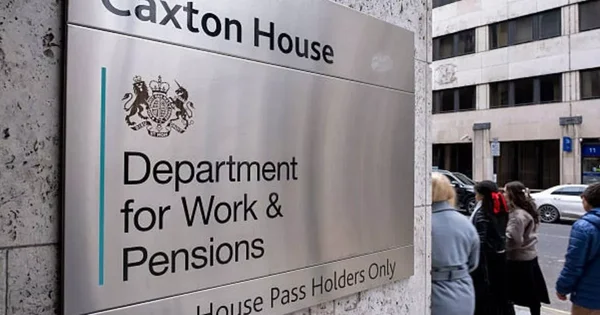Let’s Break This Down Together...
Wondering if sharing income with your spouse could save you tax, but not sure how it all works or what’s allowed? You’re definitely not alone, it’s a question many UK couples ask when trying to keep more of their hard-earned money.
This guide covers everything from marriage allowance and splitting savings, to property income and business strategies, plus tips for pensions and capital gains planning. You’ll see clear examples and learn the key rules that help reduce your combined tax bill.
By the end, you’ll know how to make the most of being a team when it comes to tax and avoid costly mistakes. Let’s dive in and see how much you could save!
What Is Income Splitting and Why Does It Matter?
Income splitting is simply the process of arranging your finances so that income and assets are shared between you and your spouse in the most tax-efficient way.
The UK tax system treats married couples and civil partners as separate individuals for tax purposes. Each of you has your own Personal Allowance, tax bands, and various tax-free allowances. However, for certain benefits like child and working tax credits, your joint income is considered to determine eligibility and the amount of financial support you may receive.
When one spouse earns significantly more than the other, there’s often unused allowances going to waste. Smart income splitting helps use these allowances and lower tax bands to reduce your taxes.
This approach is completely legitimate when done properly. HMRC recognises that couples may arrange their finances in ways that reflect their relationship’s economic reality, and these strategies can help reduce your tax overall.
The Marriage Allowance
This is the simplest way to start. To qualify for Marriage Allowance, one partner must be a non-taxpayer, meaning their income is below the Personal Allowance (£12,570 for 2024/25), while the other is a basic rate taxpayer. In this case, the lower earner can transfer 10% of their allowance, which is £1,260.
This can save you up to £252 per year. Only one partner needs to be a non-taxpayer for the allowance to be transferred. You can also backdate claims for up to four previous tax years.
The lower earner needs to apply through HMRC’s website. It takes just a few minutes but can make a meaningful difference to your finances.
When my wife stayed home with our newborn, we claimed Marriage Allowance. That simple 10-minute application put nearly £250 back in our pocket that year.

Share Your Savings and Investments
Consider holding savings accounts and investments in the name of the lower-earning spouse. Each person has their own Personal Savings Allowance and Dividend Allowance. By making use of both spouses' individual dividend allowances, couples can maximise the amount of dividend income that is received tax-free.
A higher-rate taxpayer pays more tax on interest and dividends than a basic-rate taxpayer. Moving these assets to the lower earner makes financial sense, as transferring investments can help optimise the taxation of both dividend income and other investment income. Managing your investment portfolio jointly allows you to allocate assets in a way that maximises tax efficiency.
Transfers between spouses are free from Capital Gains Tax. This makes it easy to rearrange ownership, including transferring share ownership, without tax penalties, helping to optimise the use of allowances and reduce overall tax liabilities.
Remember that the transfer must be genuine. You can’t just “pretend” to give assets to your spouse while keeping control yourself.
Property Income Planning
If you own rental properties, consider holding them in joint names or transferring legal ownership to the lower-earning spouse. By default, rental income from jointly owned property is split 50:50 for tax purposes, unless you declare a different beneficial interest.
You can submit a Form 17 to HMRC if you and your spouse or civil partner own the property in unequal shares. This allows you to declare your actual beneficial interest in the property, so the rental income is taxed according to your true ownership percentages.
Legal ownership and beneficial interest can differ, so both must be considered when planning how to allocate rental income for tax efficiency.
This approach can be particularly helpful if one of you has unused Personal Allowance or is in a lower tax band. It’s especially effective for higher-value properties.
Business Income Strategies
For business owners, there are several options to consider. You might pay your spouse a genuine salary for work they do in the business (Wether this is Trading income or Casual Income). Additionally, transferring business assets to your spouse can be an effective tax planning strategy, potentially qualifying for reliefs such as Business Asset Disposal Relief (BADR).
If you run a limited company, consider making your spouse a shareholder. Transferring assets such as shares to your spouse can help optimise tax allowances and reduce liabilities, as they may receive dividends at potentially lower tax rates.
For sole traders, a partnership with your spouse might allow profits to be shared. This can utilise both sets of tax allowances effectively.
The key word here is “genuine” - your spouse must actually contribute to the business. Any payments should reflect the value of their work.

Pension Contributions
Higher-earning spouses can contribute to their partner’s pension. This gives the higher earner tax relief at their marginal rate while building up the lower earner’s pension pot.
Additional rate taxpayers can claim extra tax relief on pension contributions through their tax return, making this strategy especially beneficial for those in the highest tax bracket.
This strategy works well for long-term planning. It helps to balance retirement income between both partners.
It’s particularly valuable when one spouse has reduced pension savings due to career breaks or part-time work. The tax relief makes this an efficient way to save.
Capital Gains Tax Planning Between Spouses
Capital gains tax (CGT) planning is a powerful tool for couples looking to maximise tax efficiency and achieve substantial tax savings. In the UK, spouses and civil partners are taxed separately for capital gains tax purposes, which means each person has their own annual CGT exempt amount, £3,000 for the 2024/25 tax year. By transferring assets between spouses or civil partners before selling, you can make full use of both exemptions and reduce your overall tax burden.
For example, if one spouse is set to make a capital gain that exceeds their annual exempt amount, transferring part or all of the asset to the other spouse before the sale allows both exemptions to be used.
This can lead to significant tax savings, especially if the receiving spouse is in a lower tax band, as capital gains above the exemption are taxed at 18% for basic rate taxpayers and 24% for higher rate taxpayers. By planning ahead and considering each partner’s tax position, couples can ensure that capital gains are taxed at the lowest possible rate.
It’s important to remember that transfers of assets between spouses or civil partners are free from capital gains tax, making it easy to rearrange ownership for tax planning purposes. However, the transfer must be genuine, with the receiving spouse taking full beneficial ownership of the asset.
Reviewing your capital gains tax position each tax year and planning asset sales accordingly can help you minimise your tax liability and keep more of your investment returns.

Inheritance Tax Considerations for Couples
Inheritance tax (IHT) can have a significant impact on family wealth, but married couples and civil partners benefit from valuable tax advantages that can help preserve assets for future generations.
The spouse exemption is a key feature of inheritance tax planning, allowing assets to be transferred between spouses or civil partners during their lifetime or on death without any IHT liability. This means you can pass on your estate to your spouse or civil partner tax-free, whether through outright gifts or trusts such as immediate post-death interest trusts (IPDI).
In addition to the spouse exemption, couples can take advantage of the transferable nil rate band and the residence nil rate band (RNRB), which together can shield a substantial portion of your estate from inheritance tax. If the first spouse or civil partner passes away without using their full allowance, the unused portion can be transferred to the surviving spouse, further increasing the amount that can be passed on tax-free.
For couples with joint estates exceeding £2 million, careful inheritance tax planning is essential to preserve the RNRB and maximise tax savings. Seeking professional advice can help you navigate complex rules and ensure your estate is structured in the most tax-efficient way. By making the most of the spouse exemption and available allowances, you can reduce your inheritance tax burden and protect your family’s financial well-being.
Joint Financial Planning for Tax Efficiency
Effective joint financial planning is the cornerstone of tax efficiency for married couples and civil partners. By working together and considering both partners’ tax positions, you can develop a tax planning strategy that delivers substantial tax savings and supports your long-term financial goals. Keeping tax records is essential in the financial planning process.
Income splitting is a popular approach, especially when one spouse earns significantly more than the other. By transferring assets such as shares or property, you can take advantage of lower tax bands and allowances, ensuring that more income is taxed at the basic rate or even remains tax-free. Making pension contributions for the lower-earning spouse can also provide valuable tax relief and help balance retirement savings.
Don’t overlook the benefits of tax allowances such as the marriage allowance, dividend allowance, and individual savings accounts (ISAs). These can all contribute to reducing your overall tax burden. Regularly reviewing your financial situation and seeking professional advice ensures you’re making the most of every opportunity, especially as tax rules and personal circumstances change.
By planning jointly and making informed decisions about transferring assets, income splitting, and using tax-efficient accounts, couples can achieve significant tax savings and enhance their financial well-being for years to come.

Final Thoughts
Income splitting between spouses remains one of the most effective tax planning strategies available to UK couples. By allocating income between partners, couples can pay less income tax by making use of lower tax brackets, reducing the overall amount of tax they pay. The potential savings can be substantial, especially with significant income differences.
The key is to ensure all arrangements reflect genuine economic reality. Artificial tax schemes will attract HMRC’s attention and could lead to penalties.
Review your arrangements regularly as tax rules change and as your personal circumstances evolve. What works best today might not be optimal next year.
Pie tax: Helping You Navigate Income Splitting and Tax Efficiency
Pie.tax’s team of tax experts is here to help you make sense of income splitting and find the best ways to reduce your household tax bill.
We offer clear, practical guidance and personalised advice tailored to your unique financial situation.
Whether you’re considering shifting income, sharing assets, or planning for the future, we’ll help you understand your options and stay compliant with HMRC rules.
Need a hand figuring it all out? Get in touch with Pie for expert support and peace of mind.









